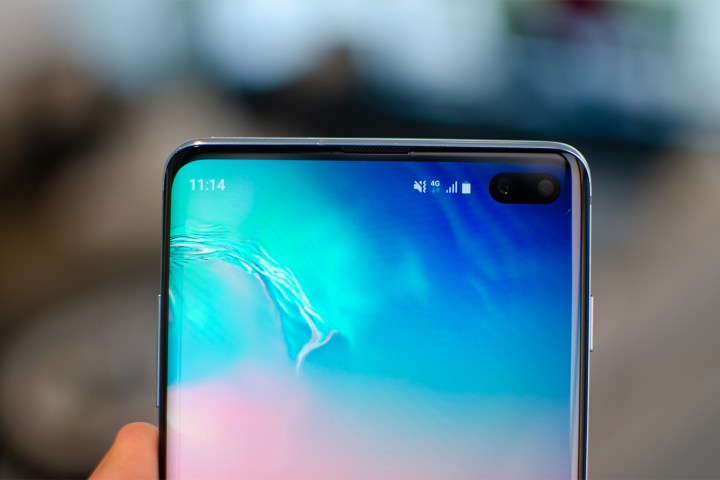
Samsung’s Infinity-O screen technology, where the selfie camera is hidden in a single or double hole in the corner of the display, is the current best alternative to a distracting and unattractive notch. However, Samsung is not absolutely satisfied with the way it looks, and is still pushing toward a true full-screen experience without compromise.
Yang Byung-duk, vice president of Samsung’s mobile communication R&D group, said in a briefing that over the next couple of years, screen technology will move on to the point “where the camera hole will be invisible, while not affecting the camera’s function in any way.” It’s this that Samsung sees as the next major advancement, before it’s possible to make a full-screen smartphone. Exactly what it means by invisible isn’t clear; but we can speculate that it will sit behind the screen itself, which will then alter its characteristics to let the camera “see” to take photos.
The placement of the camera isn’t the only barrier in making a full-screen smartphone, there’s also the speaker to consider. The LG G8 ThinQ has a Crystal Sound OLED screen which doubles as the speaker system, but the phone still has a notch for the camera system and other sensors, but the technology lends itself perfectly to a full-screen phone. Yang also said Samsung is investigating similar technology, where the screen performs as a speaker too. It has talked before about prototypes of this technology, which it called Sound on Display.
Samsung says its goal, using the above tech and more, is to make a smartphone where all the sensors are hidden away under the screen. However, this lofty goal won’t happen overnight, or even in the very near future. It will be at least two or more years before we see a device like this, Yang said. In the meantime, we should expect to see an example of an “invisible” camera hole. Samsung may be talking about the tech, but it’s unlikely to be the only manufacturer working on it.
The Galaxy S10 is the only smartphone with a hole-punch camera in an OLED screen, but it was Honor that launched the first phone with a hole-punch screen — the Honor View 20 in 2018 — only in an LCD panel. Honor made a point of highlighting the technical challenges that had to be overcome before it was ready for sale. The resulting cutout is smaller than Samsung’s, and placed in the opposite corner. It’s highly likely Honor is also examining ways to hide the hole-punch even more.
By talking about what it’s working on, Samsung has confirmed that screen technology — whether it’s hole-punch cutouts, folding smartphones, or invisible camera holes — is driving some of the largest advancements in smartphone design we’ve seen in several years.



